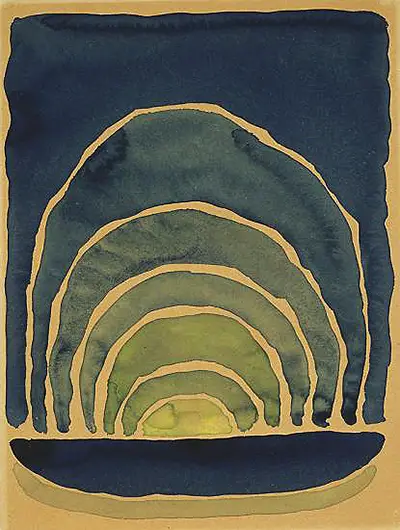Within this set of paintings she would study the different effects of light across the day, as well as visiting a number of locations across Texas in order to witness a greater variety of results. One can compare this to the way in which Monet would study his water lilies, japanese bridge and also arrangements of haystacks within the French countryside as a way of learning how the balance of light upon the same objects can change over time. O'Keeffe wanted to work freely and so chose the medium of watercolour for these three abstract pieces. The item found here, the first in the series, was a more complex than the others, with multiple bands of tone used in a similar way to how a rainbow blends colours across a gradient sky. Clearly after this version she decided to push even more aggressively for abstraction in Light Coming on the Plains II and III.
"...My first memory is of the brightness of light—light all around..."
Light Coming on the Plains I measures 22cm by 30cm and was painted on fairly standard brown paper. Each item was the same size and they may well have been a part of a sketchbook, before later being separated. She would have found this easier to transport, and perhaps even worked outdoors, with watercolour being a medium that is far more suitable to outdoor work than oils, because of the reduced overhead. There were also some study drawings completed around this time, that could have been produced in the same location. The value of her artworks has ensured that each and every last piece left over from her career has been searched tirelessly for, and documented in the years since.
All three paintings have been kept together in the collection of the Amon Carter Museum of American Art, which is located in Texas, USA. The venue is relatively new by the standards of major art galleries, having opened in the 1960s, and this perhaps explains why their focus is so strong on relatively contemporary art, with little featured prior to the 19th century. There is also a huge amount of photography to be found here too, which was not considered a professional form of art until the 20th century. Therefore, even for historians, there is much to see and learn here, whilst art followers will marvel at paintings by the likes of Childe Hassam and also members of the Hudson River School, such as Thomas Cole and Frederic Edwin Church.
